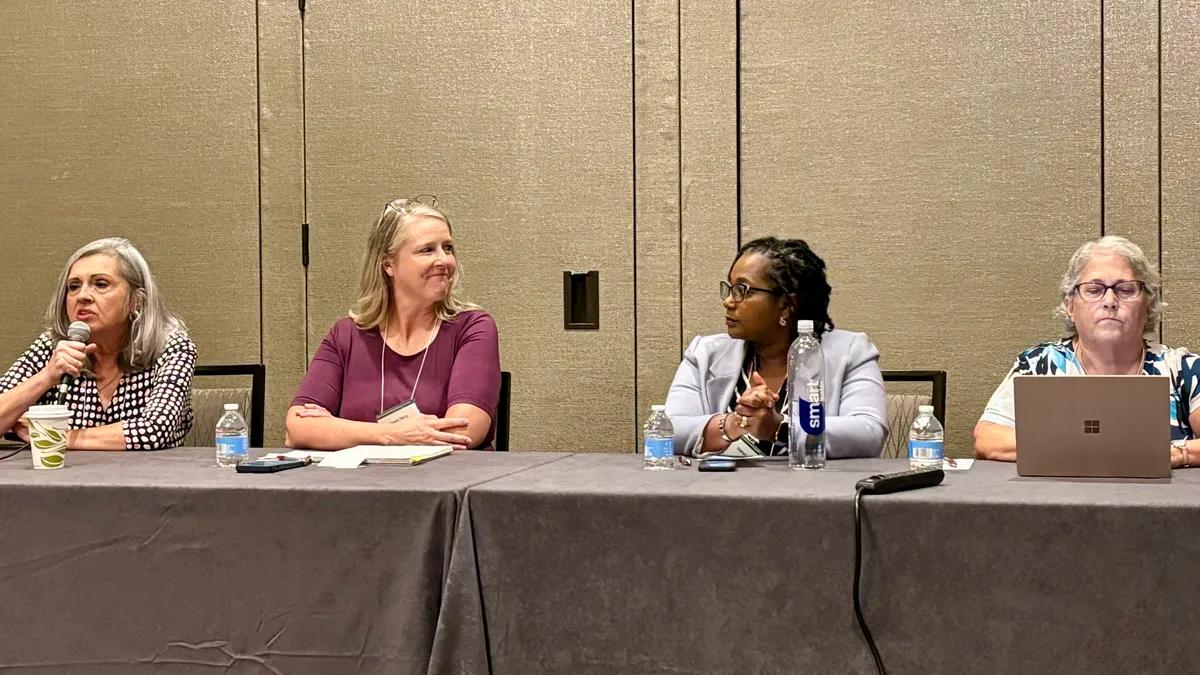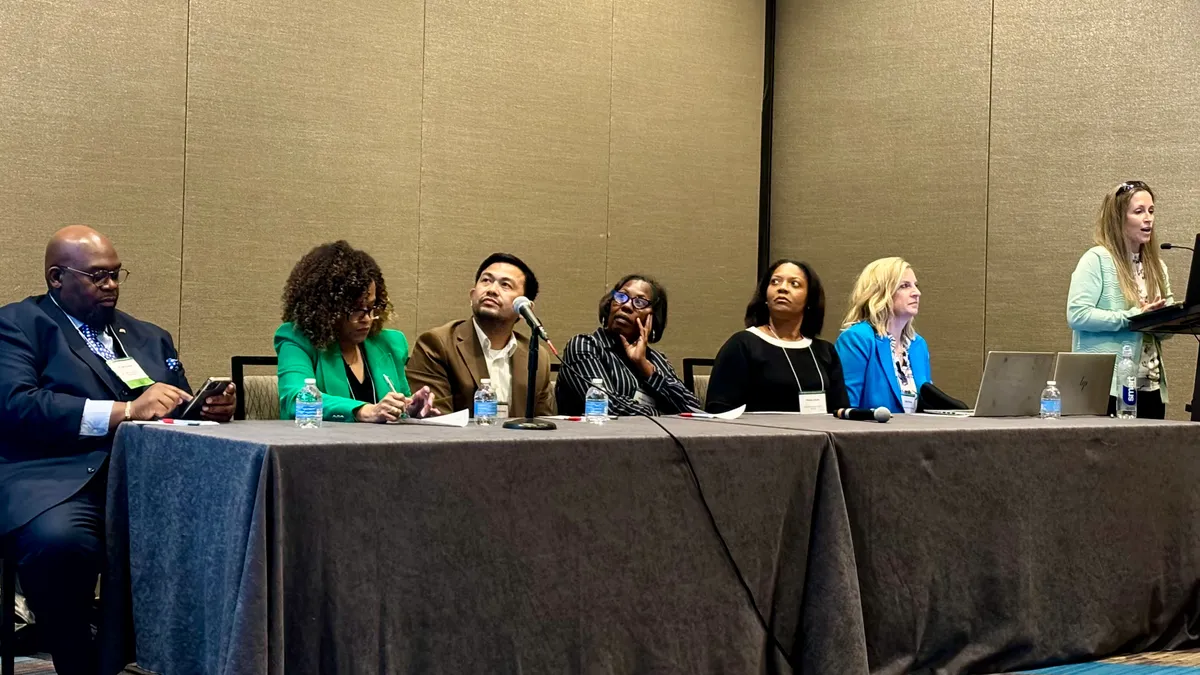ARLINGTON, Va. — Children with disabilities whose families are in the military face unique obstacles to education due to their high mobility rate. That's why it's important for educators and other partners to reach out to these families early and often with support, said speakers during two sessions Tuesday at the U.S. Department of Education's Office of Special Education Programs annual conference.
To help this mobile population, it is critical to build supportive relationships for the families. These can involve educators both on and off of military installations, Department of Defense representatives, parent training and advocacy groups, peers with lived military experiences, and other organizations.
"Just be aware that there are people at every level trying to do really good things for the kids we serve," said Karen Terry, a program analyst in DOD's Office of Special Needs.
Military-connected children move about six to nine times during their K-12 experience, or about every two to three years, said Peg Kinsell, director of public policy for the Statewide Parent Advocacy Network, known as SPAN, a parent training and information center in New Jersey.
That means families have to connect with new school systems and disability specialists often. And gaps in services or unfamiliarity with new communities can cause stress and anxiety, the speakers said.
More than 42,000 active military duty families have children with disabilities or special healthcare needs, according to Kinsell. Additionally, it is "highly likely" that there is a military-connected student in every school in the U.S., she said.
"Military kids don't just have one issue," Kinsell said. "They don't just have a special ed issue or they don't just have a developmental disability or healthcare issue. So it's important, I think, that we frame all the work we do in partnership with other organizations and departments that can support our kids."
Examples of supports that partners can provide to military-connected families include:
-
Guidance on navigating new school systems.
-
Workshops on understanding their rights to special education services.
-
Training in specific topics like healthcare.
-
Connecting them to people familiar with experiences of military families.
Speakers offered three recommendations for collaborations to better serve military-connected students with disabilities.
1. Know the acronyms
As in the education field, the military has acronyms that are helpful to know when working with families. DOD's Military One Source website lists common ones. The site also includes information about DOD's Exceptional Family Member Program for those having a family member with special needs.
2. Seek out resources
Kinsell and other speakers emphasized the wealth of resources, including state-specific materials, available. At the national level, the Center for Parent Information and Resources — an OSEP technical assistance center — has a dedicated webpage for military families.
Brooke Schmidt, co-deputy director of program and quality with The Parents' Place of Maryland — a federally funded parent support organization — said her organization has created fact sheets, explainers and videos for both parents and school leaders.
The Education Department has resources for serving military connected children with disabilities.
3. Understand the MIC3
For receiving schools and districts, knowing the rights of incoming military-connected families can help reduce challenges for those transitioning families and create a more welcoming situation for the student.
The Interstate Compact on Educational Opportunity for Military Children, overseen by the Military Interstate Children's Compact Commission, or MIC3, is an interstate agreement with all 50 states that addresses key issues encountered by military families as they move across state borders.
The compact attempts to smooth military families' transitions by addressing state policy differences in the age for kindergarten enrollment, high school graduation requirements and special education services.















